Hidden high in the Taurus Mountains just 30 kilometers northwest of Antalya, Termessos is one of Turkey’s most majestic and haunting archaeological sites. This ancient Pisidian city, carved into the mountainside at over 1,000 meters above sea level, feels like a secret world suspended between clouds and pine trees. Unesco describes it as one of the best-preserved ancient cities in Turkey—and yet, unlike many ancient ruins, it remains almost untouched by tourism.
You won’t find souvenir stalls here. No tour buses or café queues. In fact, most tour companies skip Termessos entirely because there’s no on-site or nearby commercial infrastructure. But for those who make the journey, what awaits is a hike through silence, solitude, and the slow unraveling of a forgotten civilization—its bones still intact, its spirit humming beneath wind-blown trees.
Layers of history
Termessos was built by the Pisidians, a fierce mountain-dwelling people who successfully resisted conquest by Alexander the Great. According to historical records, Alexander was so impressed by the city's fortified location and strategic defenses that he chose not to attempt an invasion. Later, the city became part of the Roman Empire, and many of the stone buildings visible today date from this period.
As you follow the path uphill, stone remnants emerge gradually from the undergrowth: first an arched gateway, then collapsed walls of a gymnasium, bathhouses with still-visible vaults, and a row of ornate sarcophagi strewn along the hillside.
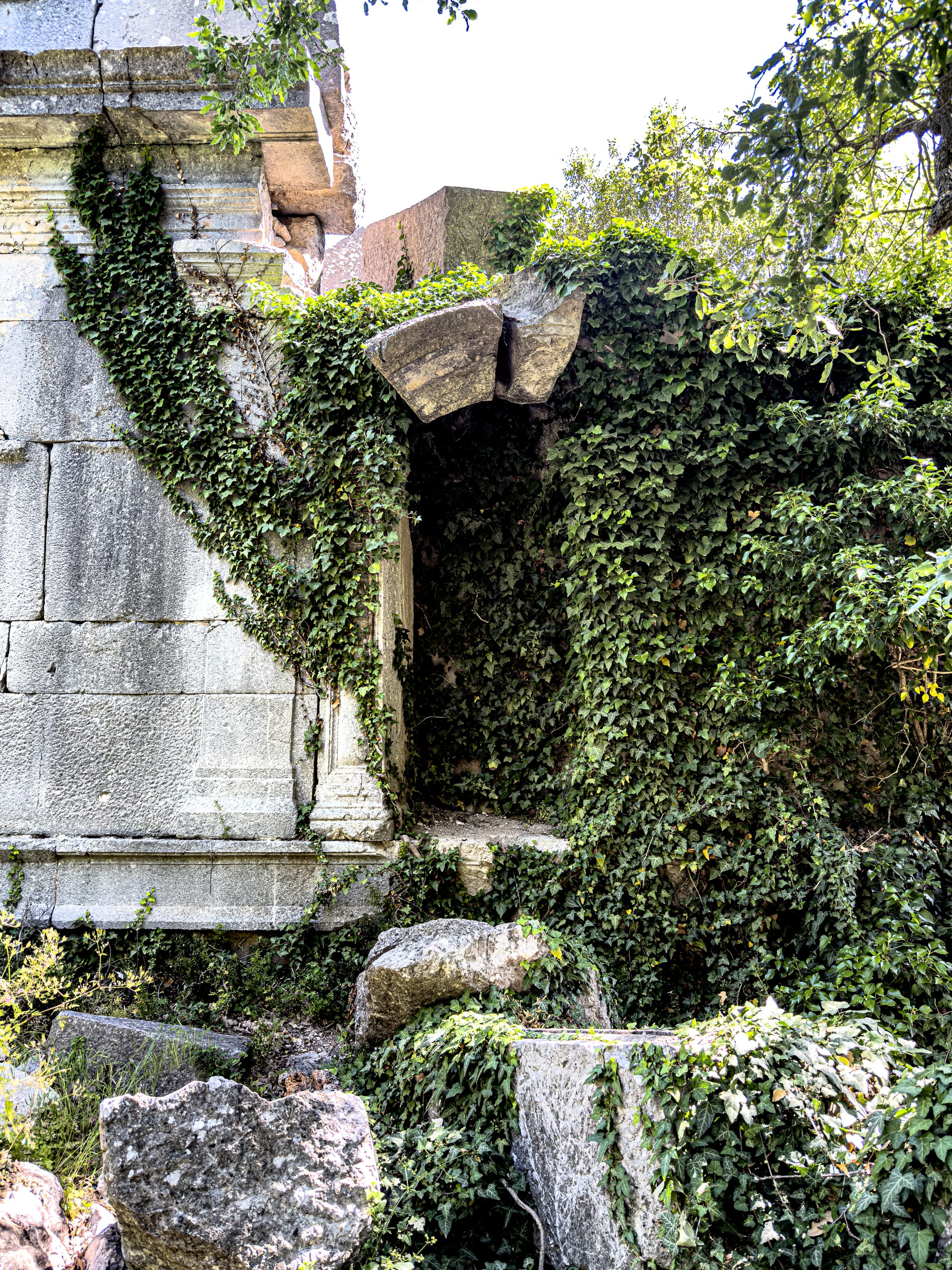
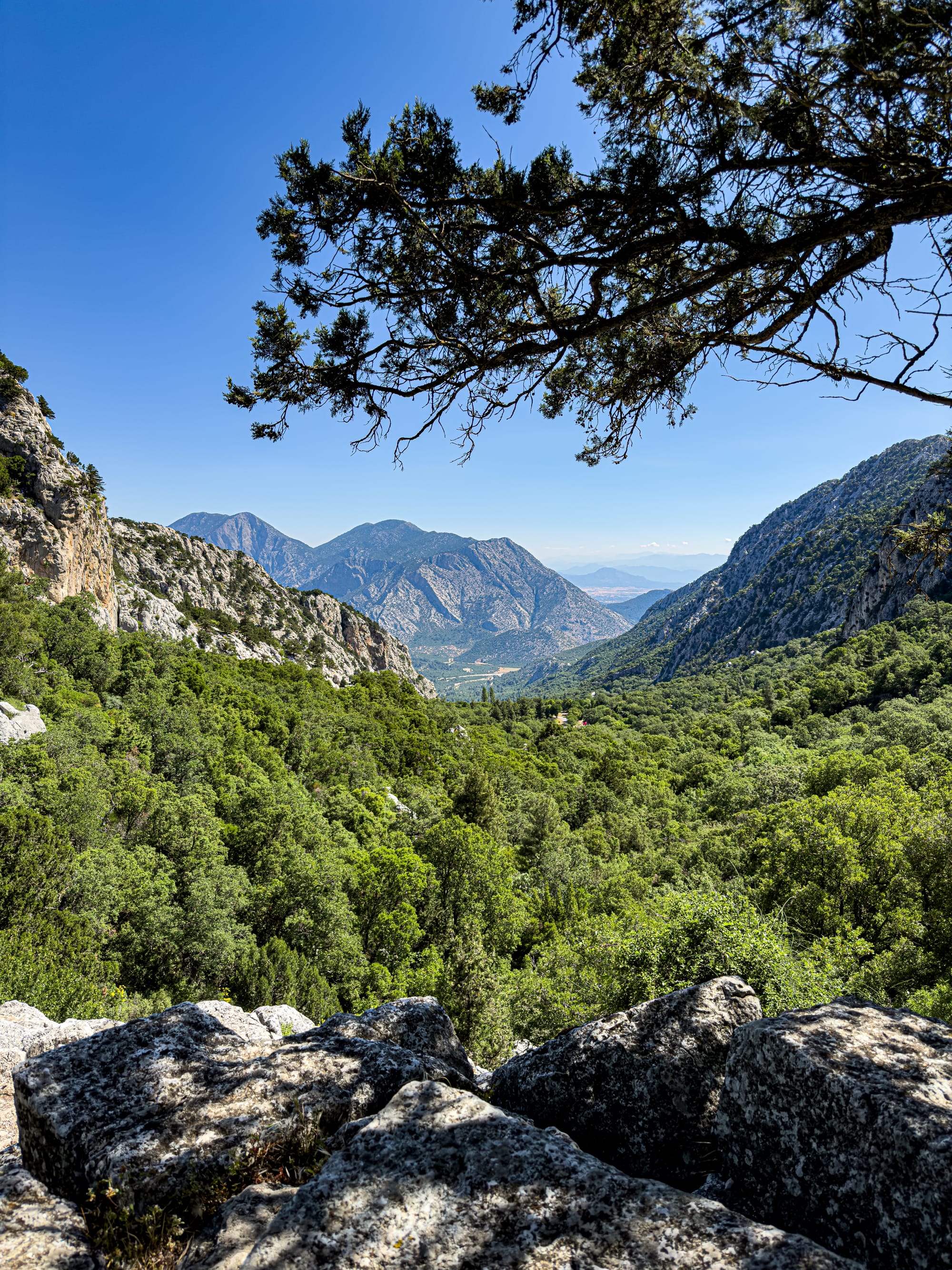
Quiet scenes from Termessos, perched in the mountains
Many of the tombs have gaping holes in their centers—evidence of centuries of grave robbery, when looters would break through the thick limestone lids to retrieve valuables.
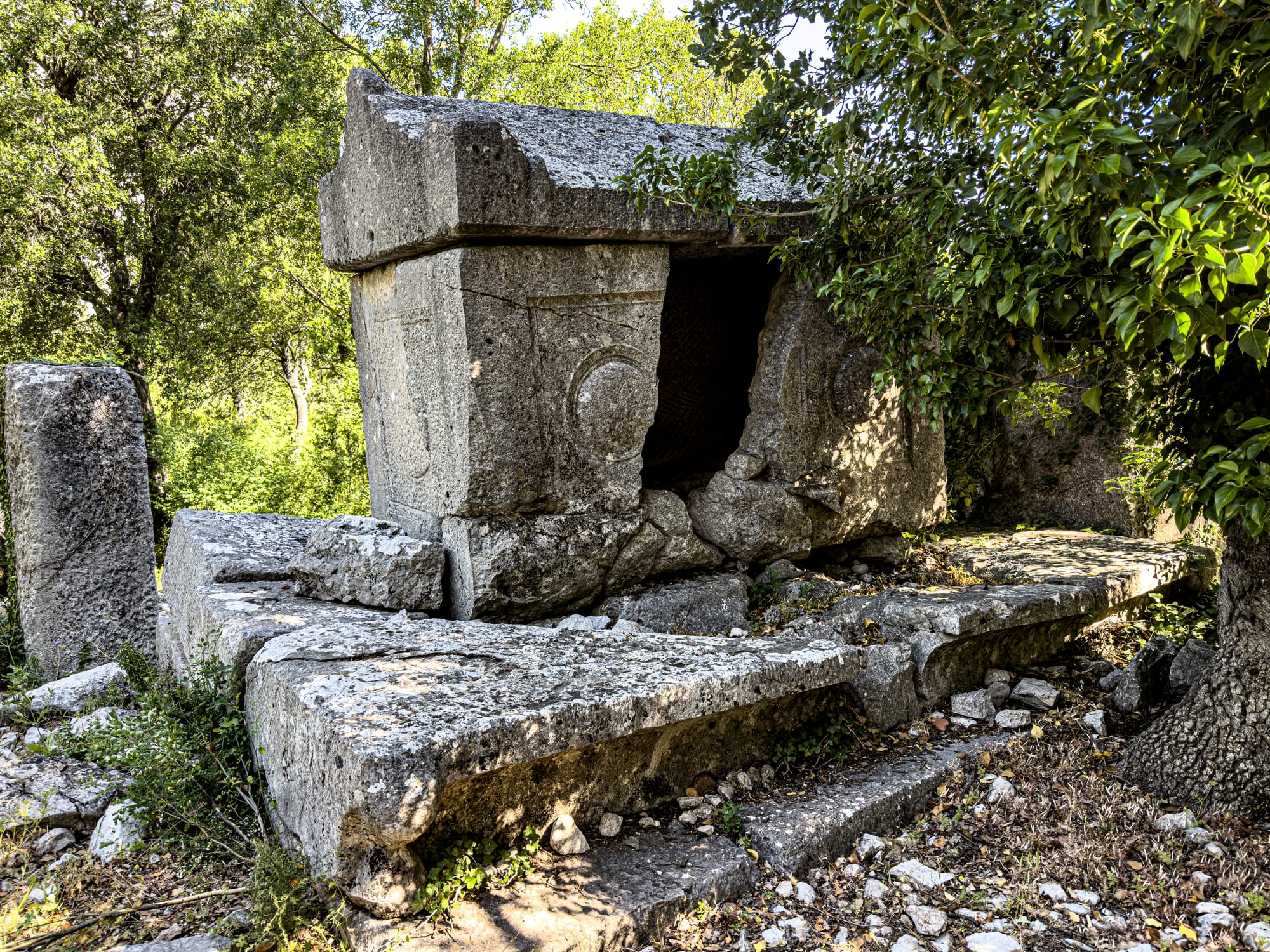
Still, much of Termessos remains remarkably well preserved. The stonework is enormous and elemental, thick with age and moss. Plants grow from between the joints. Lizards dart along warm slabs. And then, suddenly, the ground opens out into a sweeping stone amphitheater, carved directly into the slope of the mountain.
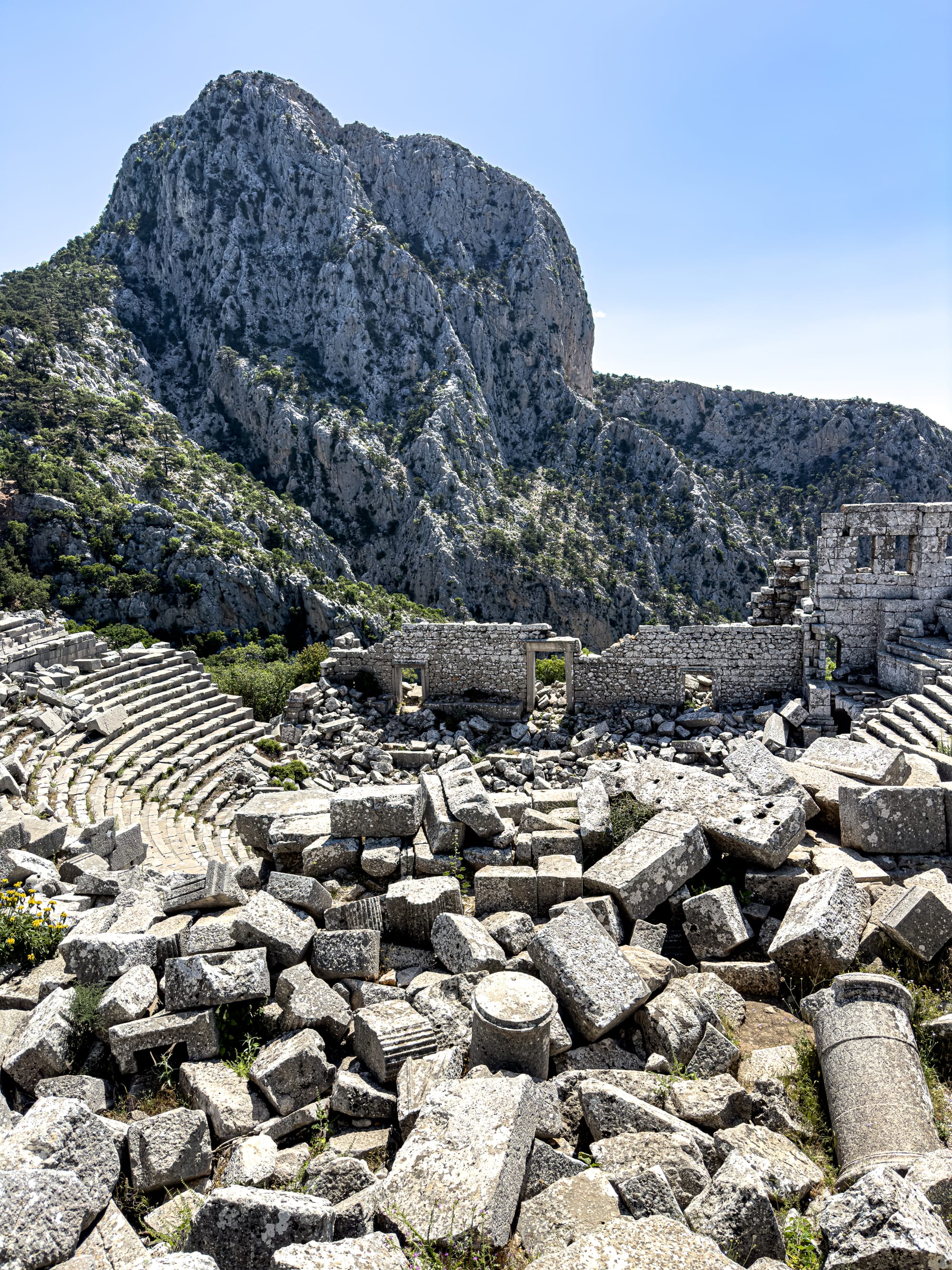
The amphitheater is a marvel—spacious, dramatic, and perched on a cliff edge with views that drop away into forested ravines and rise again into jagged peaks. On our visit, we had the entire space to ourselves. No voices, no other travelers—just the wind moving through cedar and pine, and the long echo of stillness. You don’t sit in that theater to watch a performance; you sit in it to feel the scale of time.
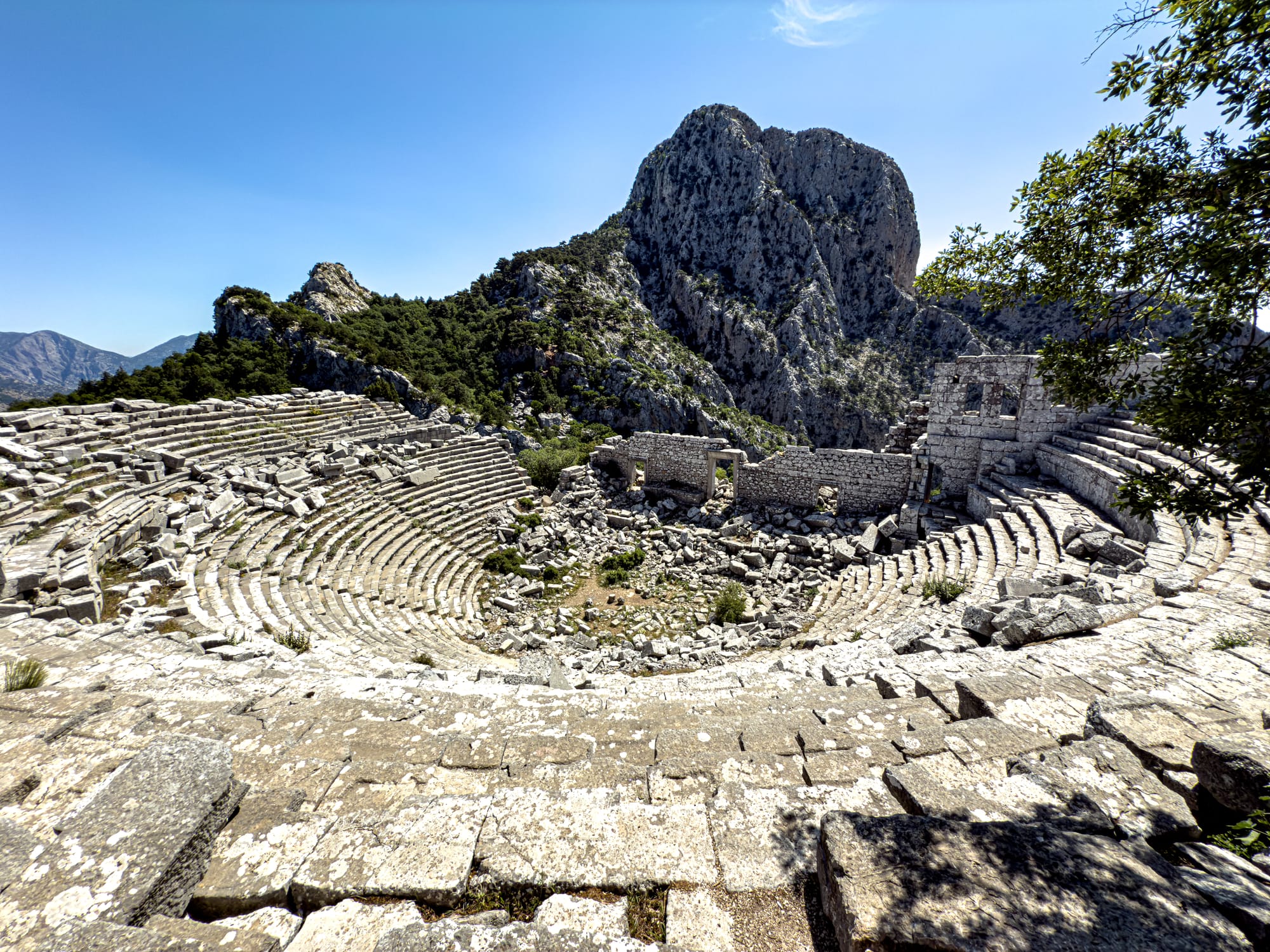
The hike through Termessos is not overly strenuous, though it does involve uneven steps, forested trails, and a few ascents. Our guide was incredibly thoughtful in pacing the walk. He stopped to interpret ruins, share history, and point out native herbs and wildlife.
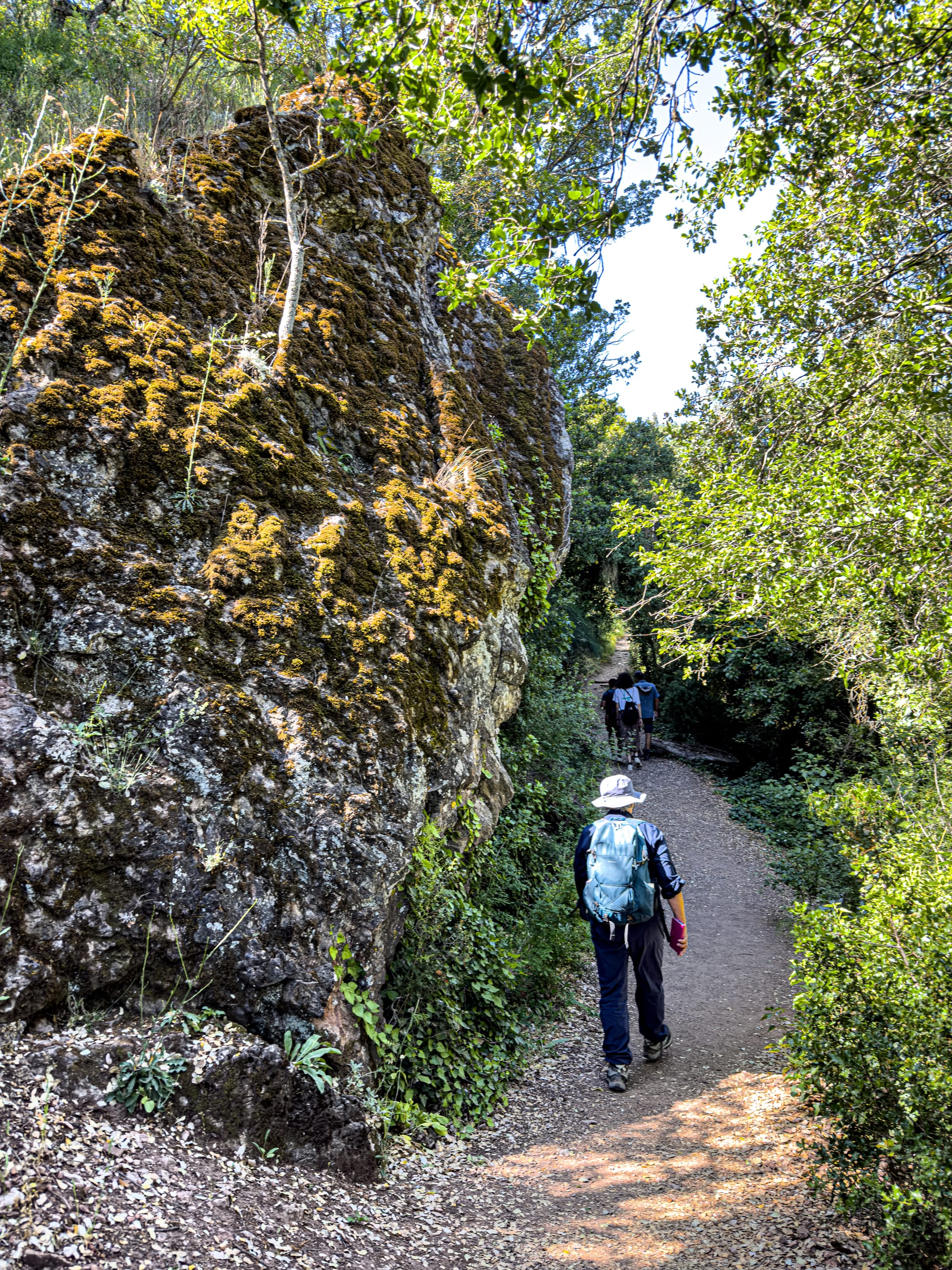
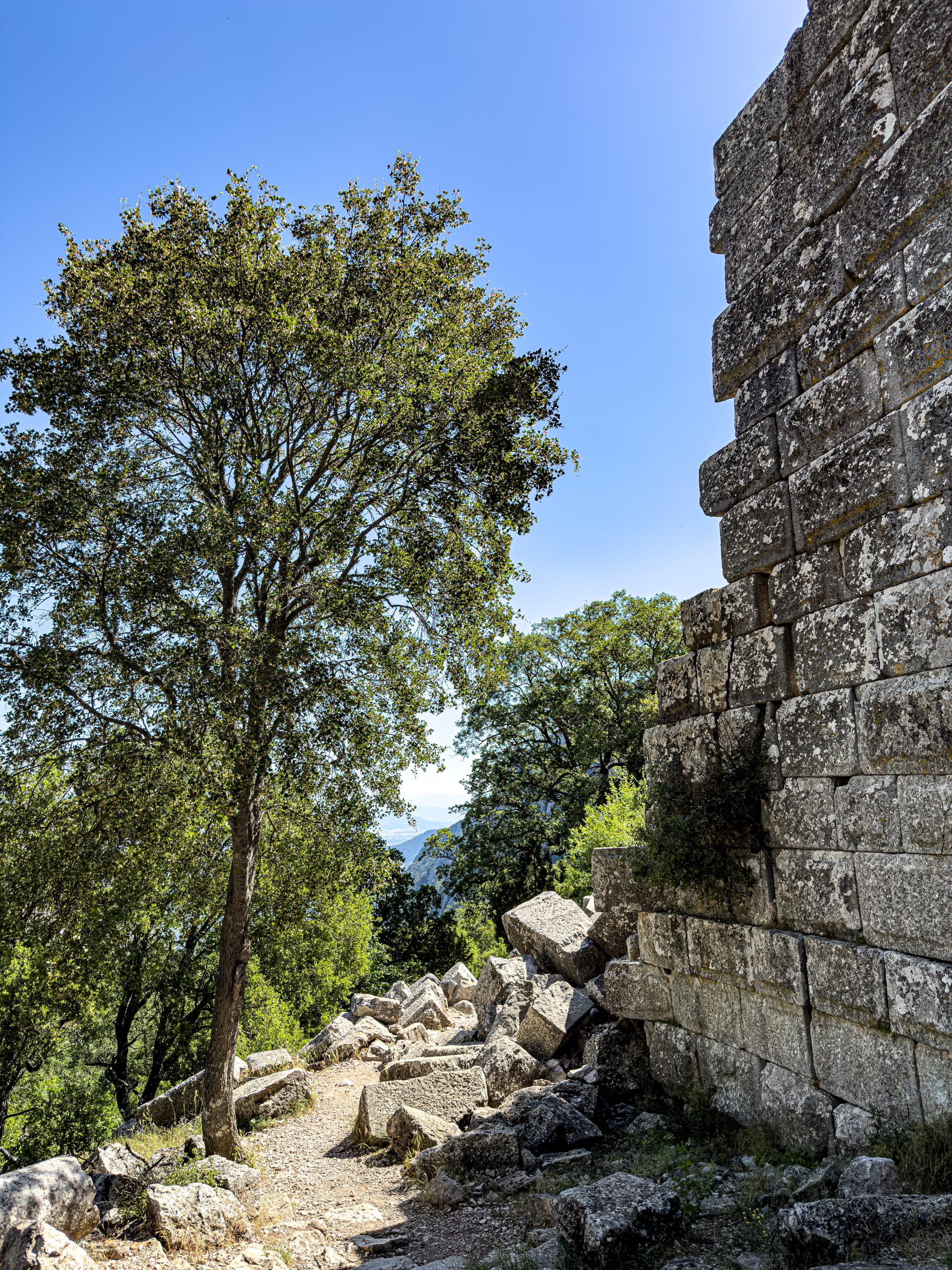
Shaded hiking trails lead past moss-covered boulders and sunlit ruins, offering changing views and quiet rest spots along the way
From ancient cisterns and temples to olive presses and arched storehouses, the layout of Termessos suggests a highly organized and fortified urban life, complete with schools, council buildings, and a vast necropolis.
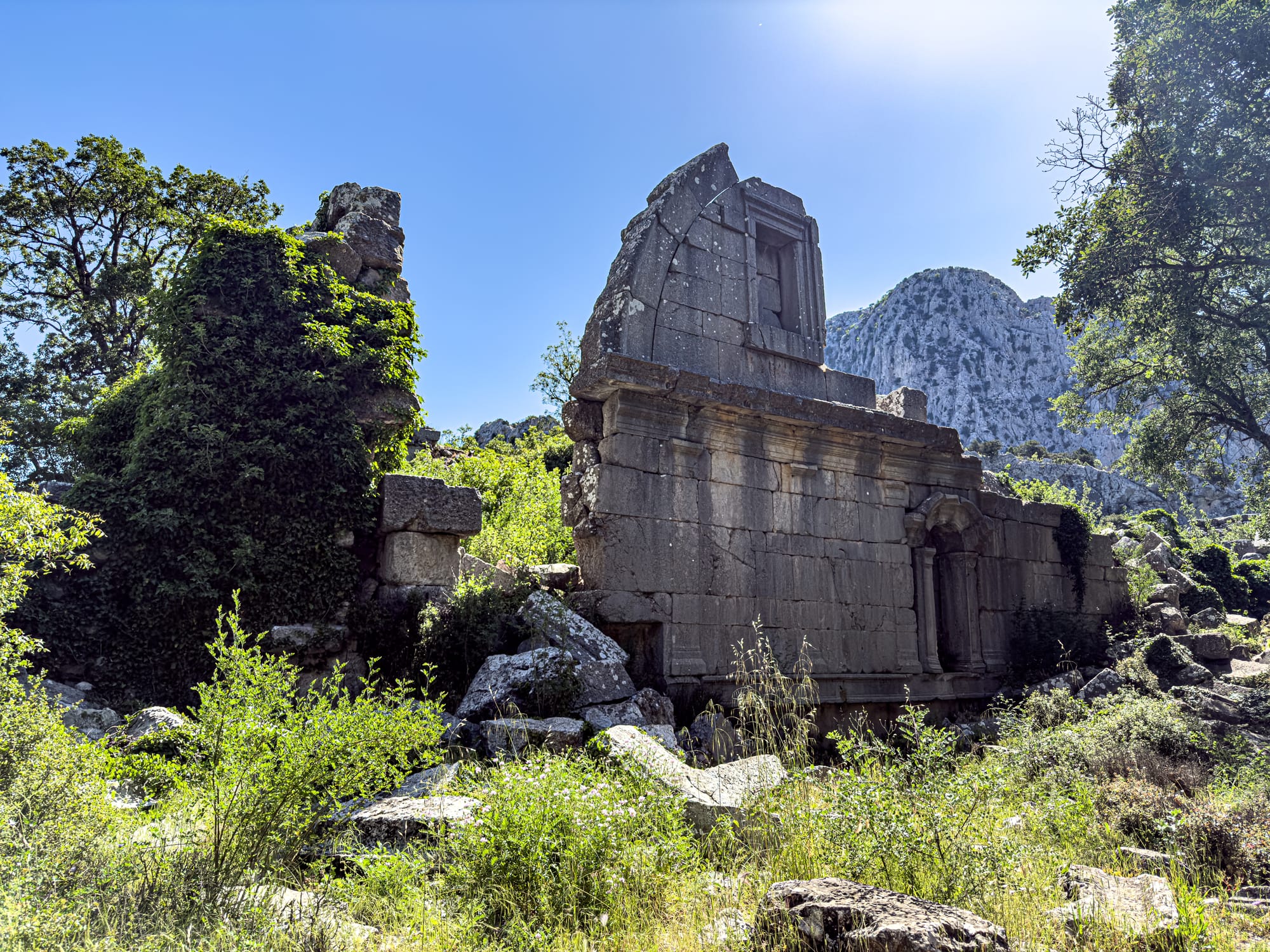
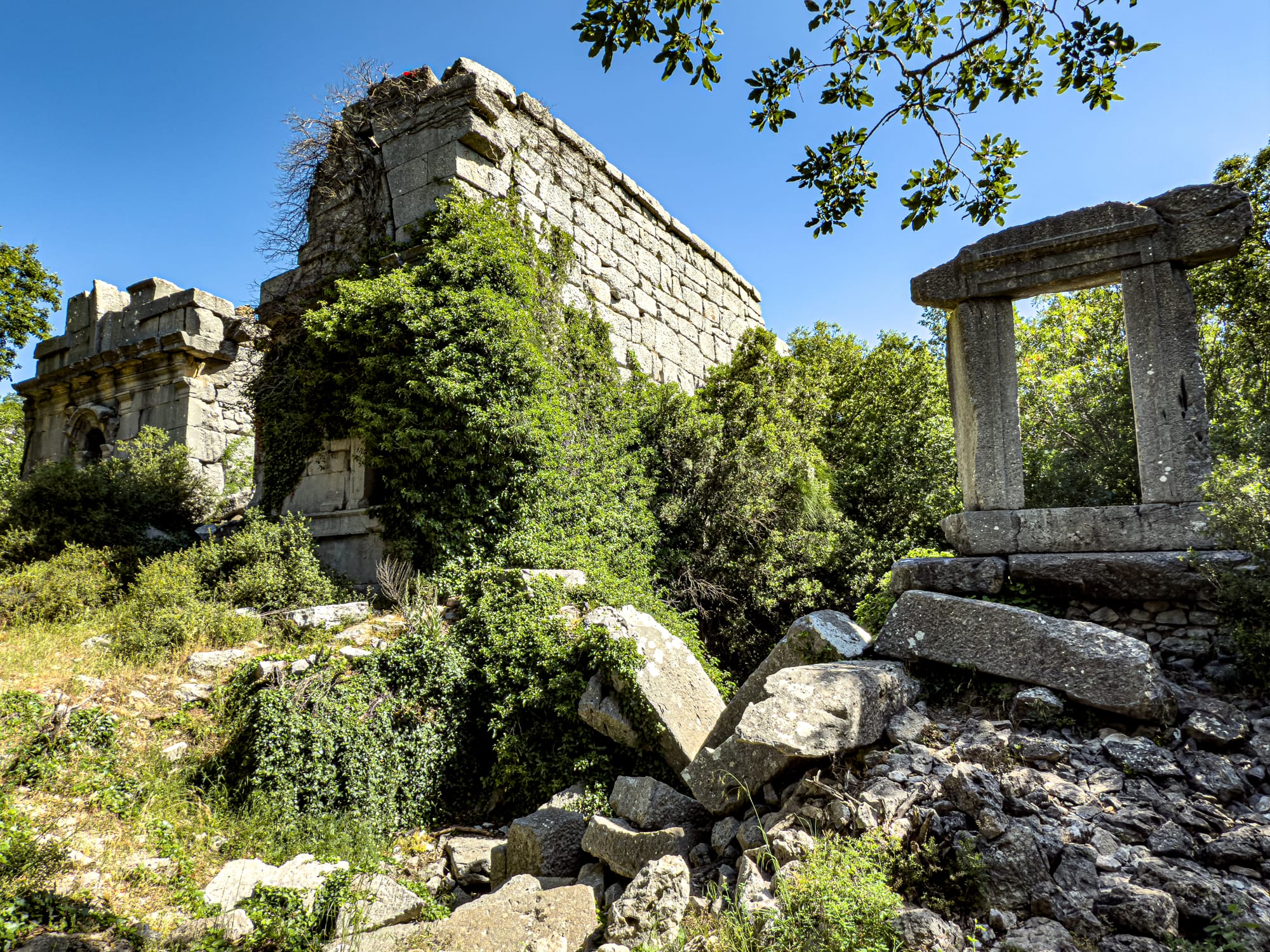
Scattered architectural remains from ancient tombs, temples, and civic buildings merge with the surrounding forest
Unlike many lowland ruins in Turkey, Termessos wasn’t restructured or buried by later settlements, so the bones of the city remain intact, scattered yet legible.
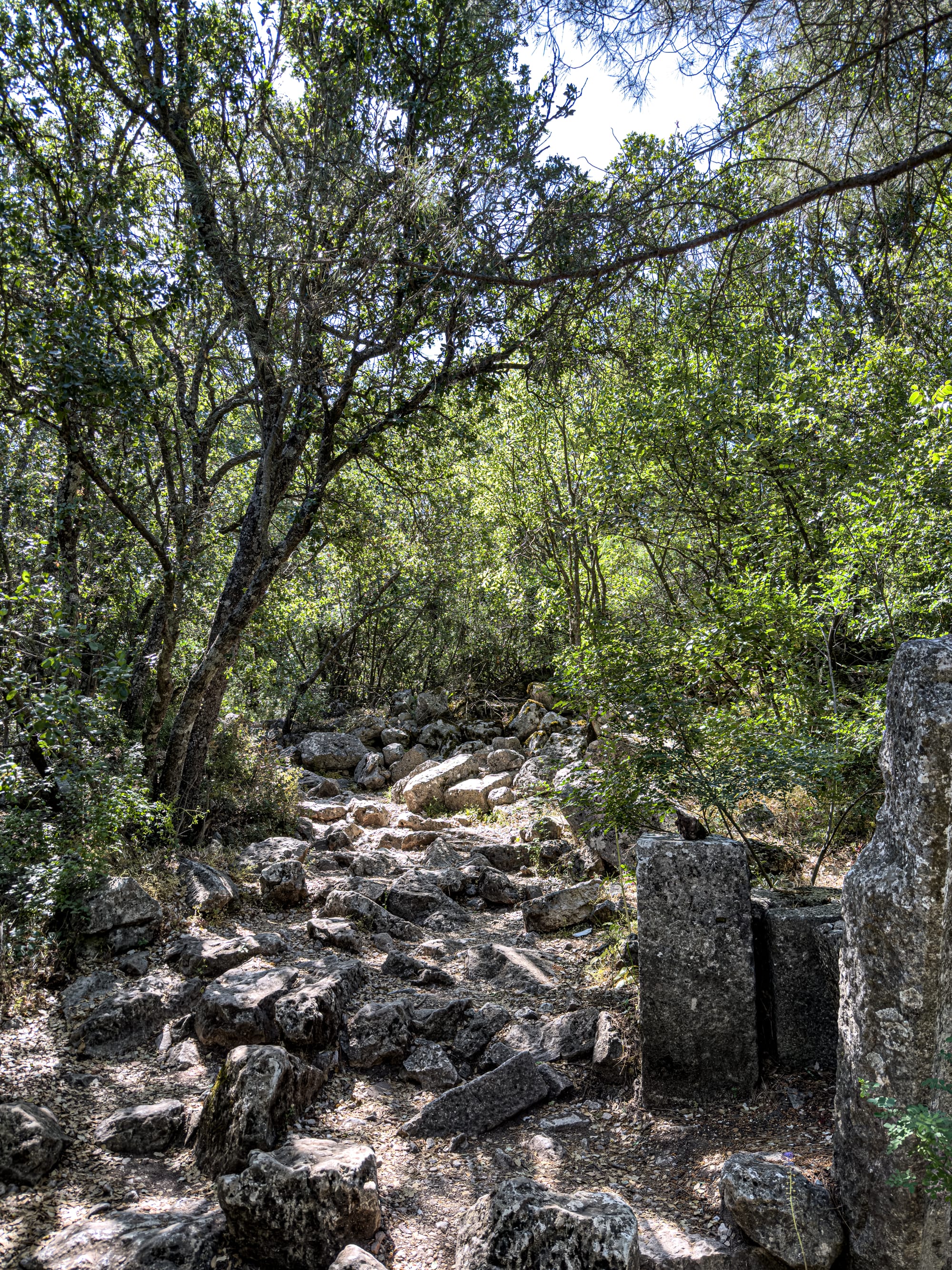
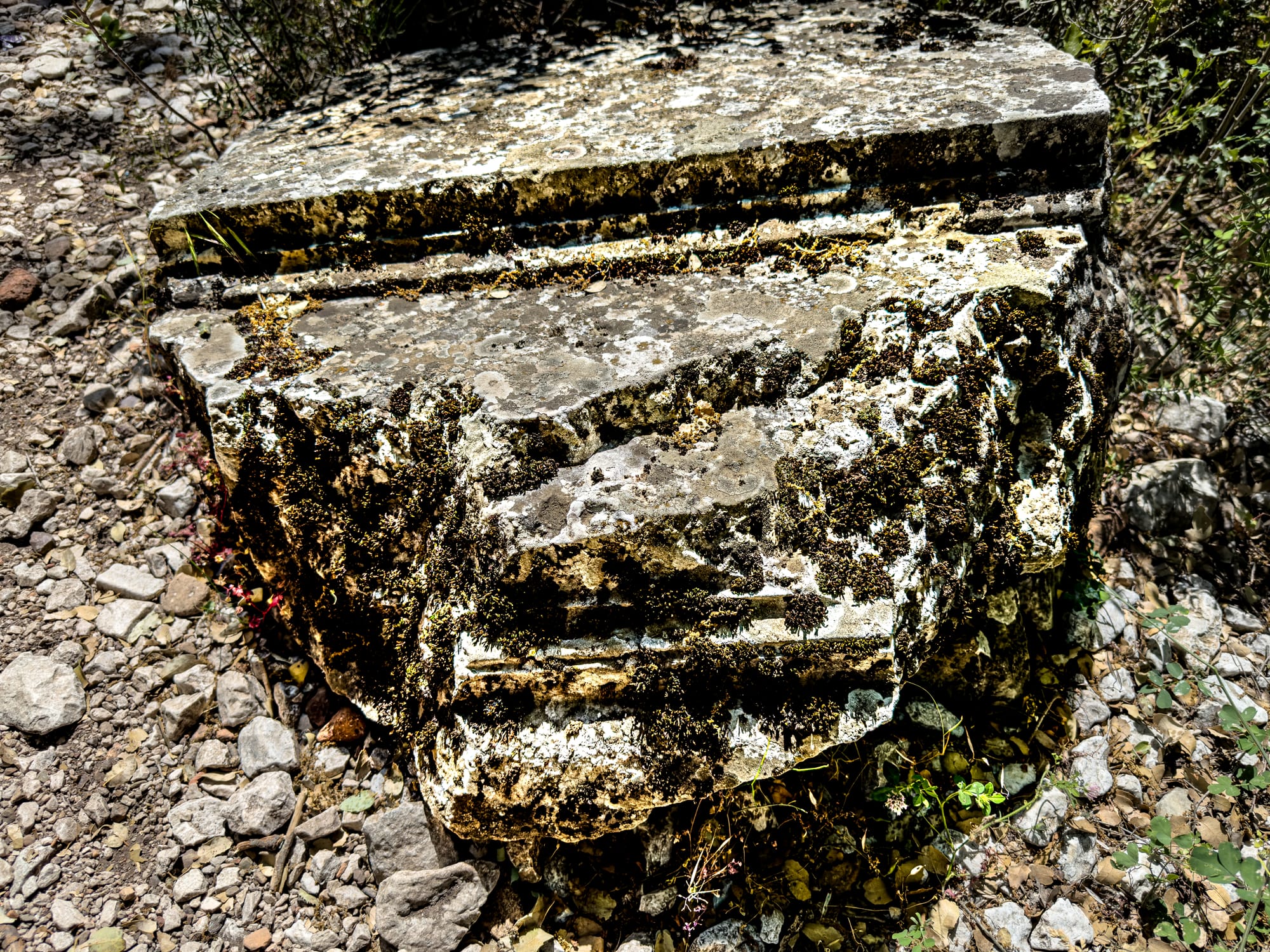
The forest trail to Termessos winds through rocky, uneven terrain, where fragments of ancient columns still rest
It is, in every sense, a mountain stronghold—a "Turkish Machu Picchu," as it is sometimes called.
Nature in every direction
The beauty of Termessos lies not only in its ruins but also in its ecosystem. As you walk through pine-shaded paths and limestone clearings, you're immersed in one of the richest natural reserves in southwestern Turkey. Termessos is part of Güllük Mountain National Park, a protected area filled with endemic flora and fauna.
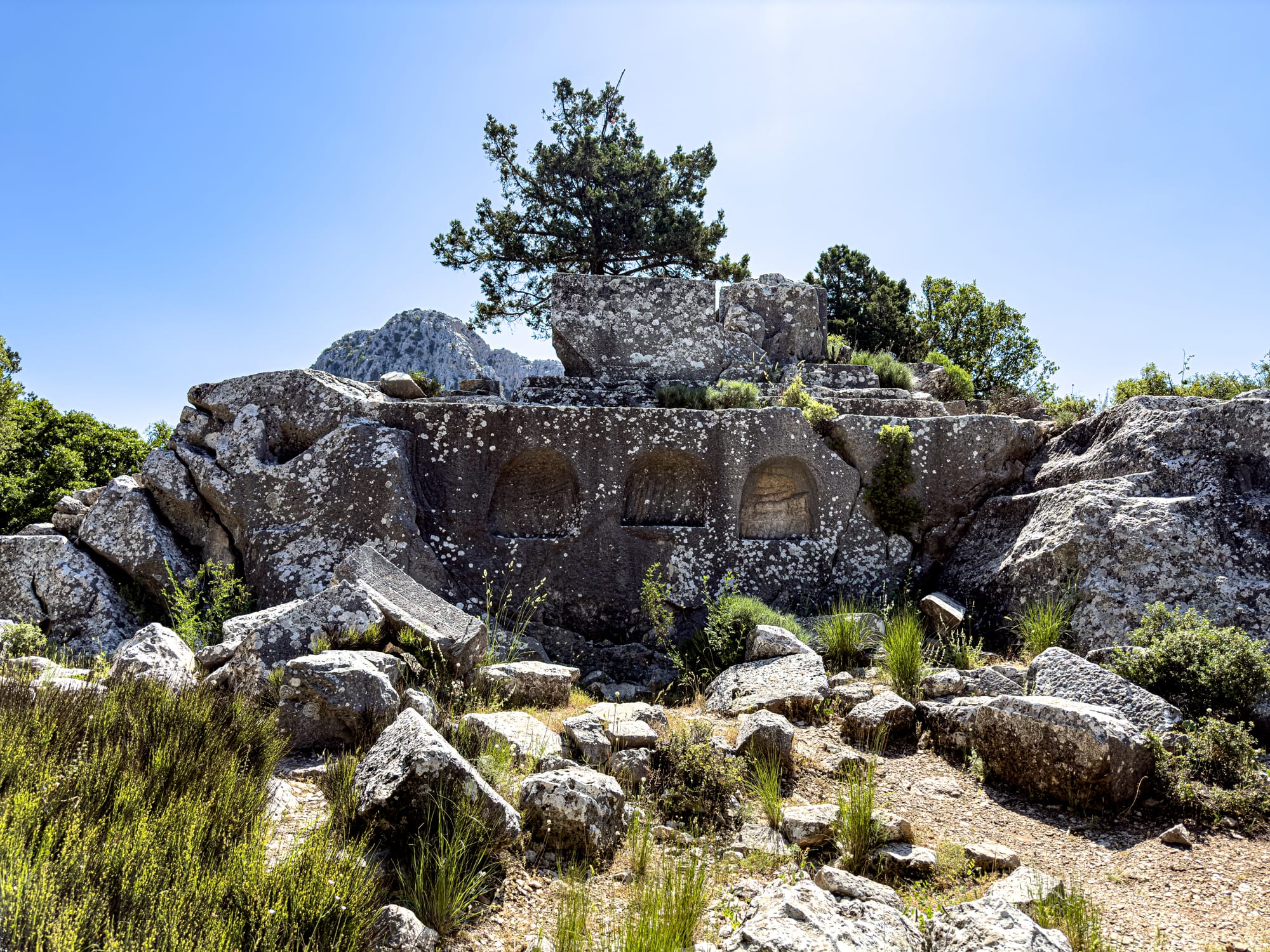
Bright pink crown vetch (Coronilla varia) climbs over rocky outcrops in loose, starburst clusters. Nearby, brilliant red Anatolian poppies (Papaver rhoeas) grow from between the cracks of ancient cistern walls, their petals like delicate silk against the stone.
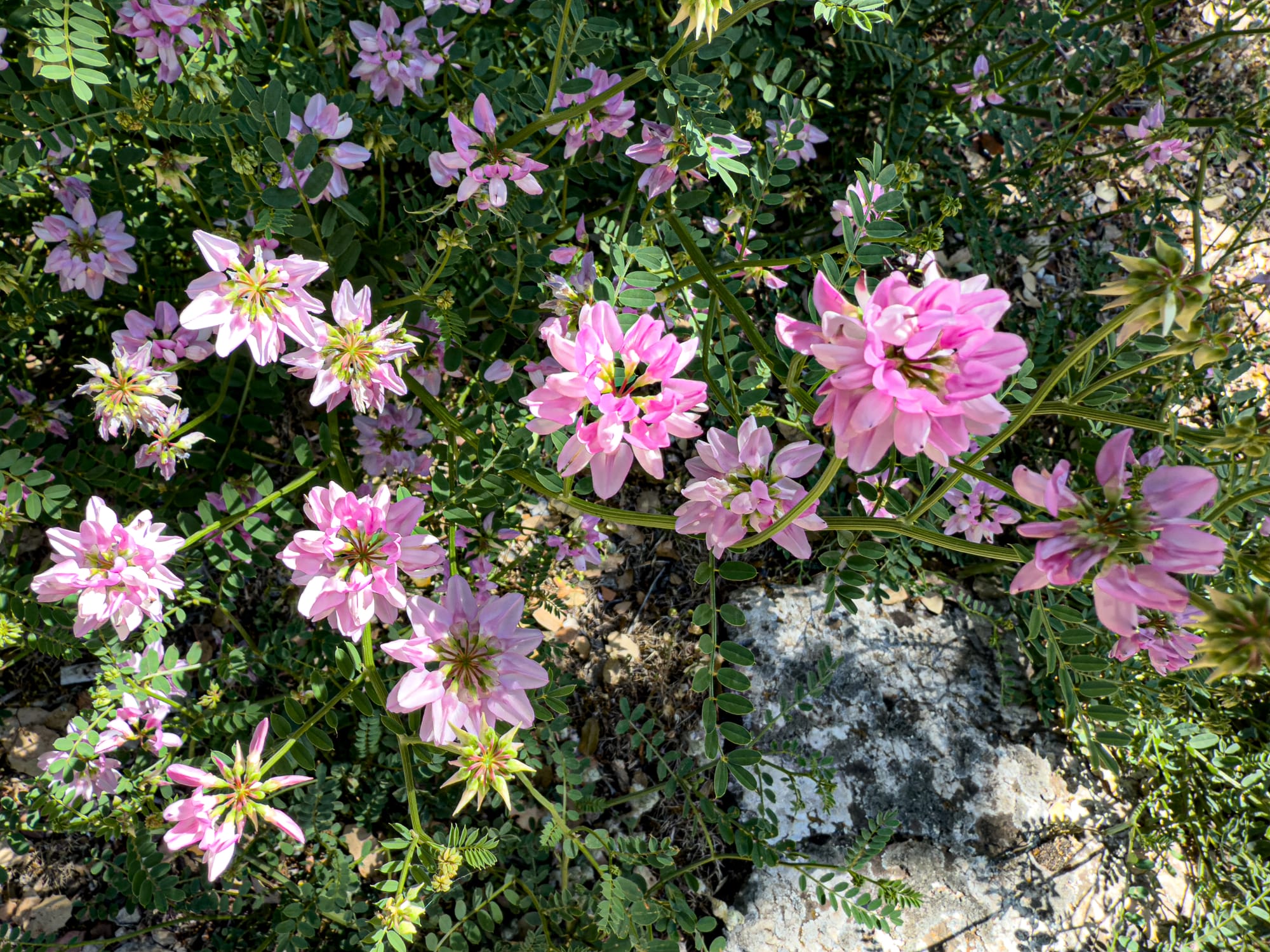
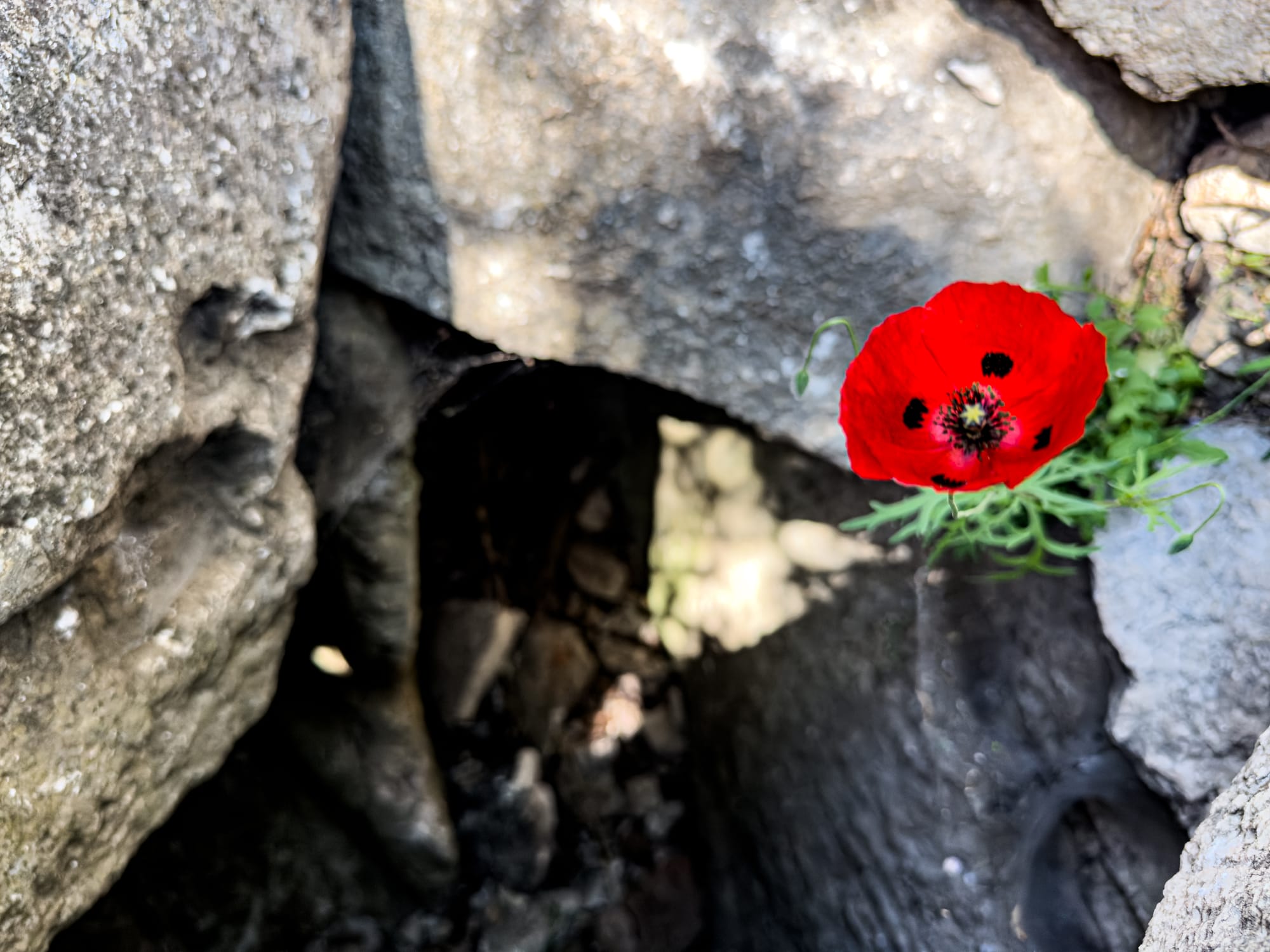
Delicate pink crown vetch and a lone red Anatolian poppy grow wild among the ancient stones
In shaded groves, clusters of yellow fennel (Foeniculum vulgare) bloom, releasing aniseed-sweetness into the dry air. You might also spot Jerusalem sage (Phlomis fruticosa), a mountain shrub with thick stems and whorls of soft yellow flowers, thriving on open slopes.
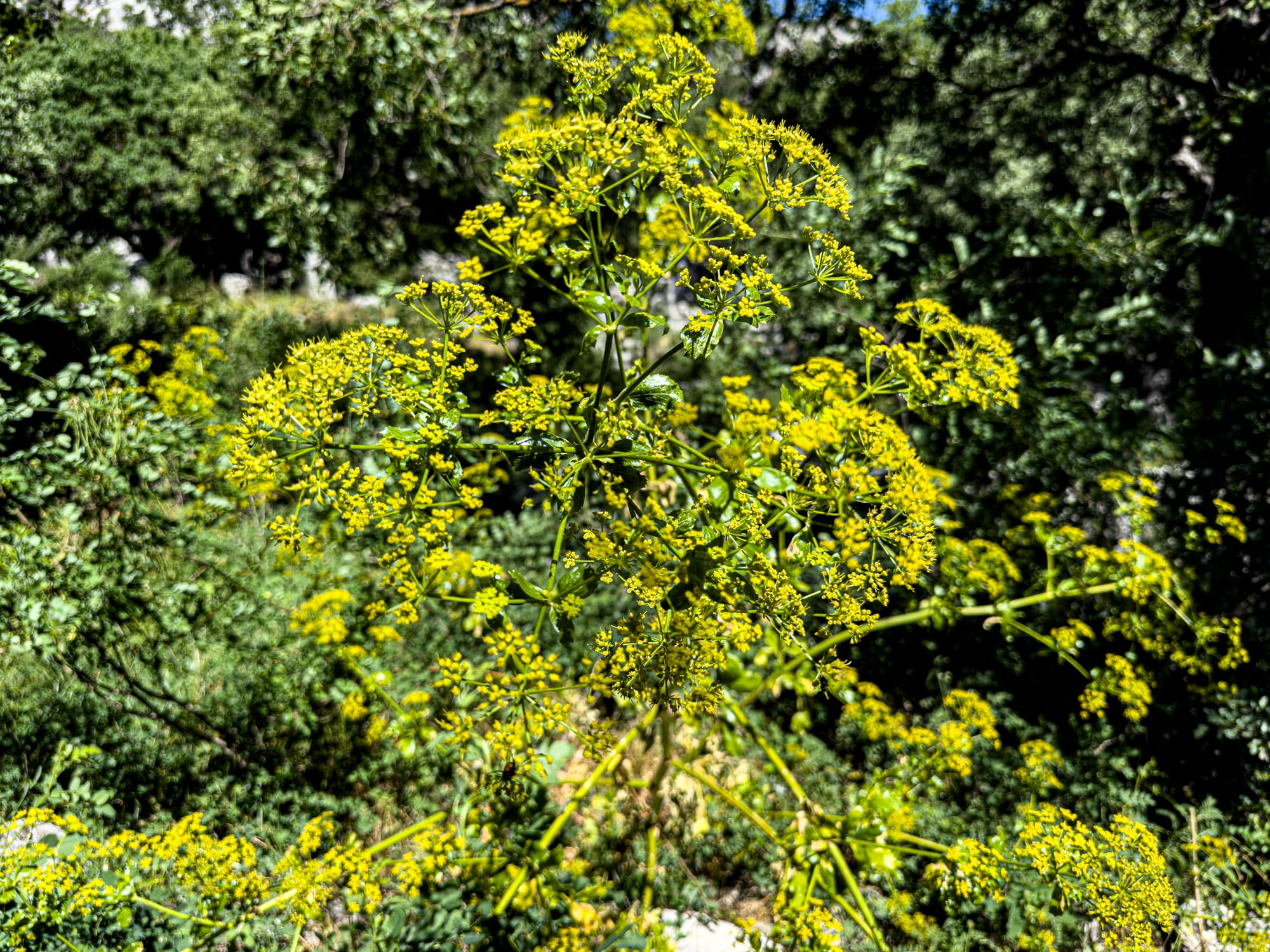
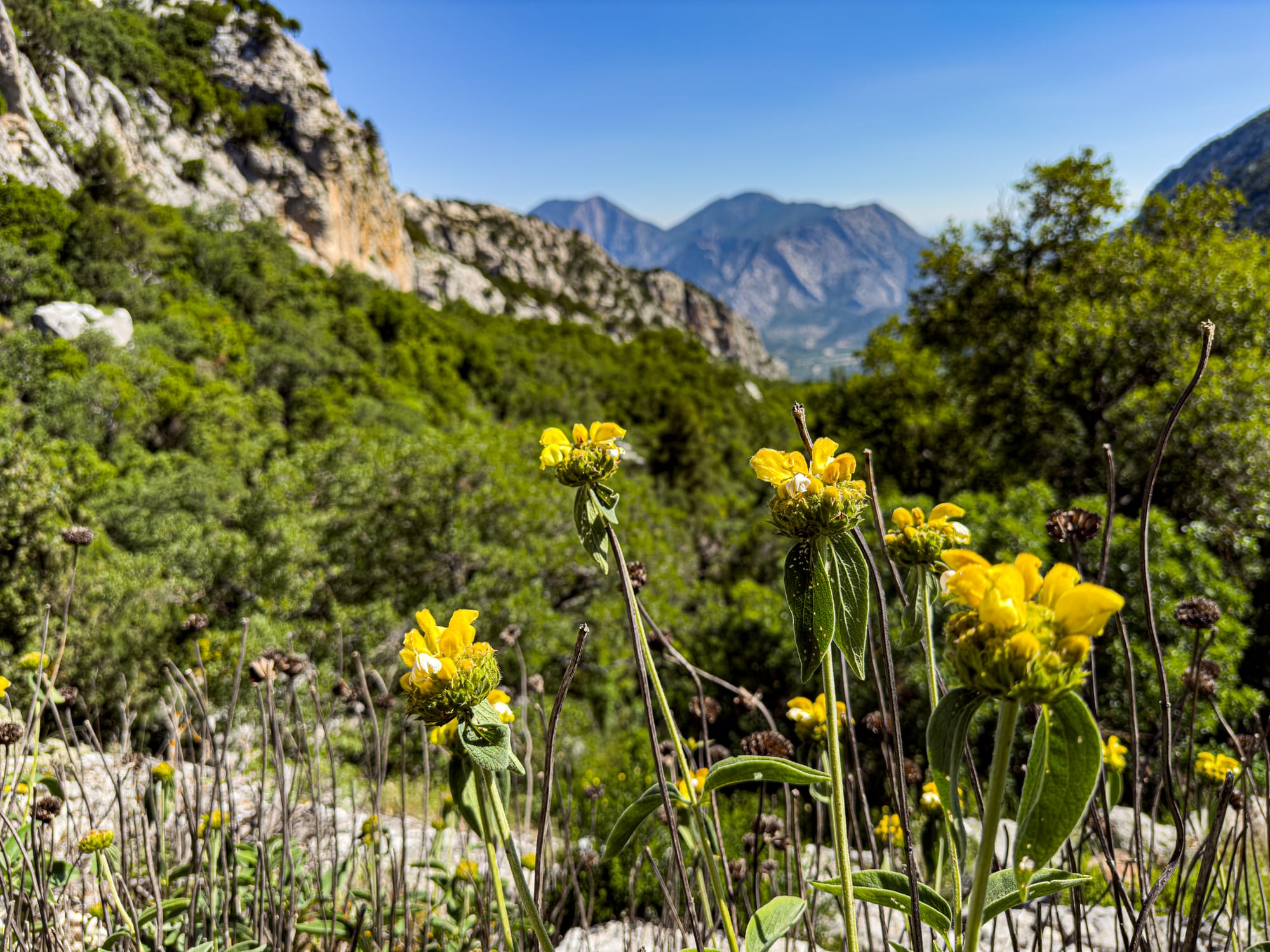
Golden fennel and Jerusalem sage thrive in Termessos’s rugged elevation
Throughout the hike, the scent of wild herbs—thyme, oregano, mint—rises with the breeze. Swallows dart overhead. Butterflies idle between moss-covered columns. And in the quiet, each breath seems to taste a little more ancient.
A guide-led hike worth doing
Because Termessos lacks signage and formal paths, having a guide truly enhances the experience. Our guide was informed, generous with his time, and able to adjust the route and pace to suit our small group. With only three people on the trail that day, we never felt rushed or overwhelmed.
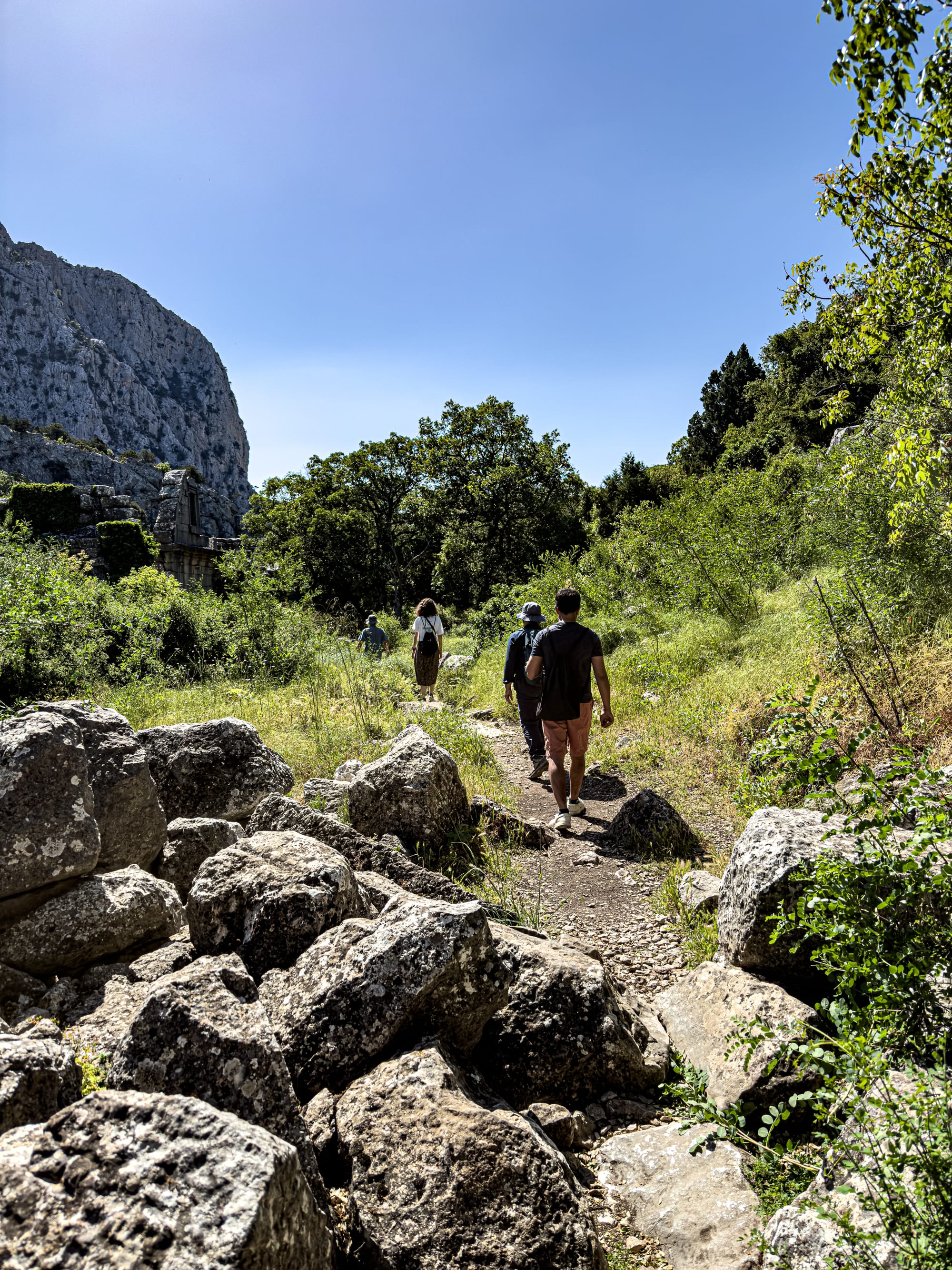
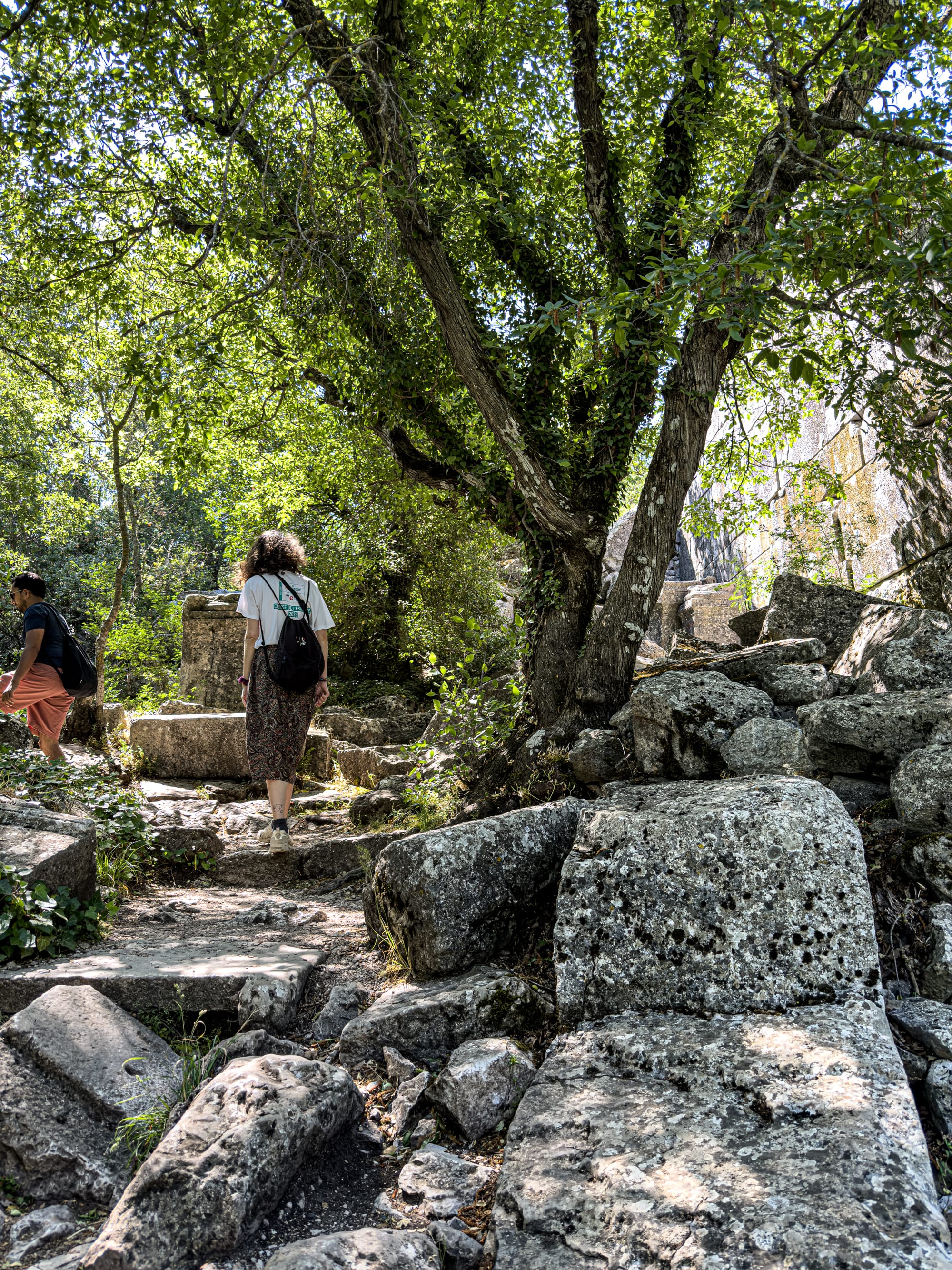
Winding through sunlit meadows and shaded ruins, the path through Termessos offers moments of quiet immersion
The hike started with us exploring some tombs, their walls softened by ivy and time. Some stood beneath massive trees, others cracked open to the sky. One was completely overtaken by vines, its lid displaced and tilted like a broken tooth. Each ruin told a story in silence.
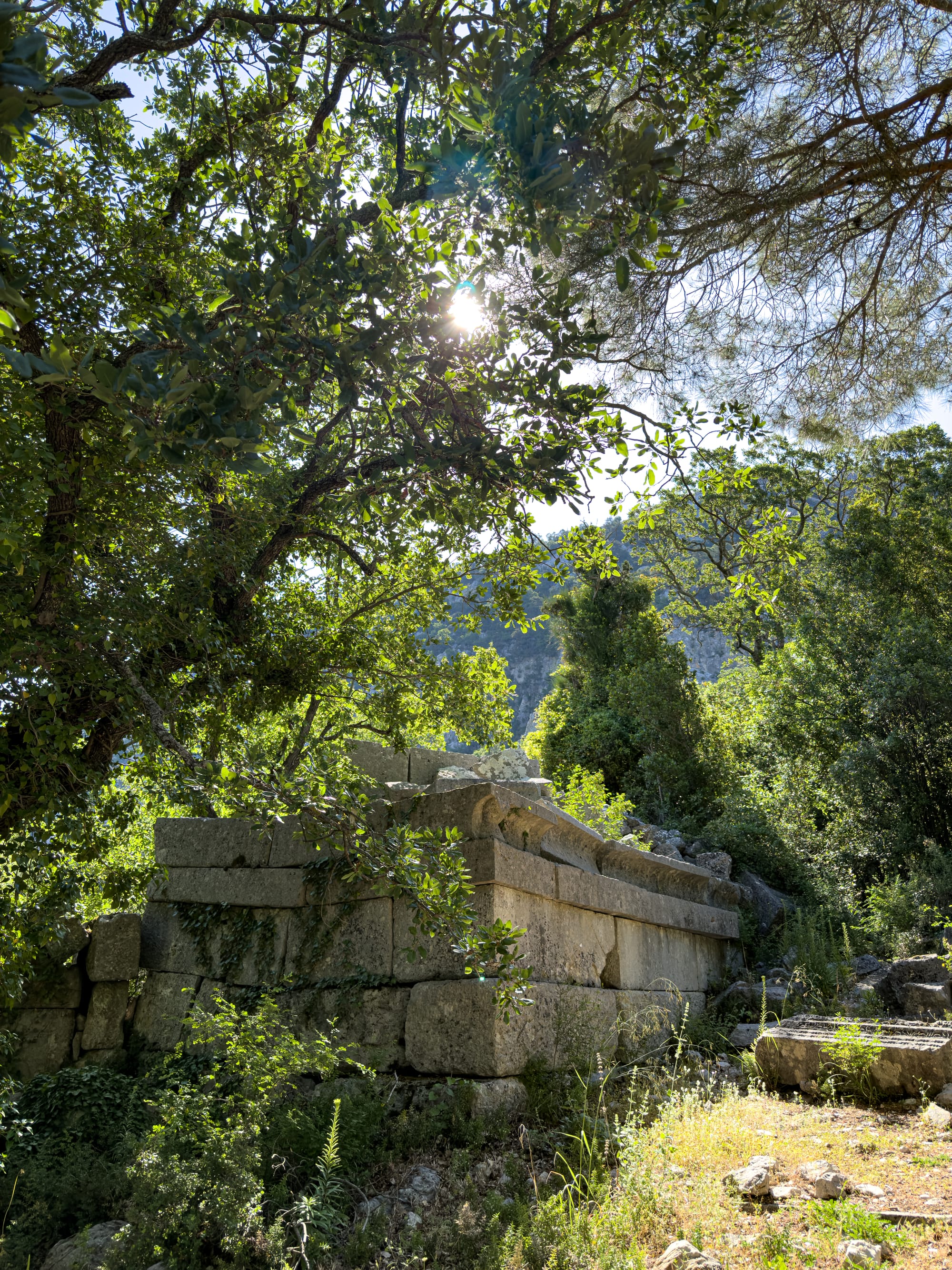
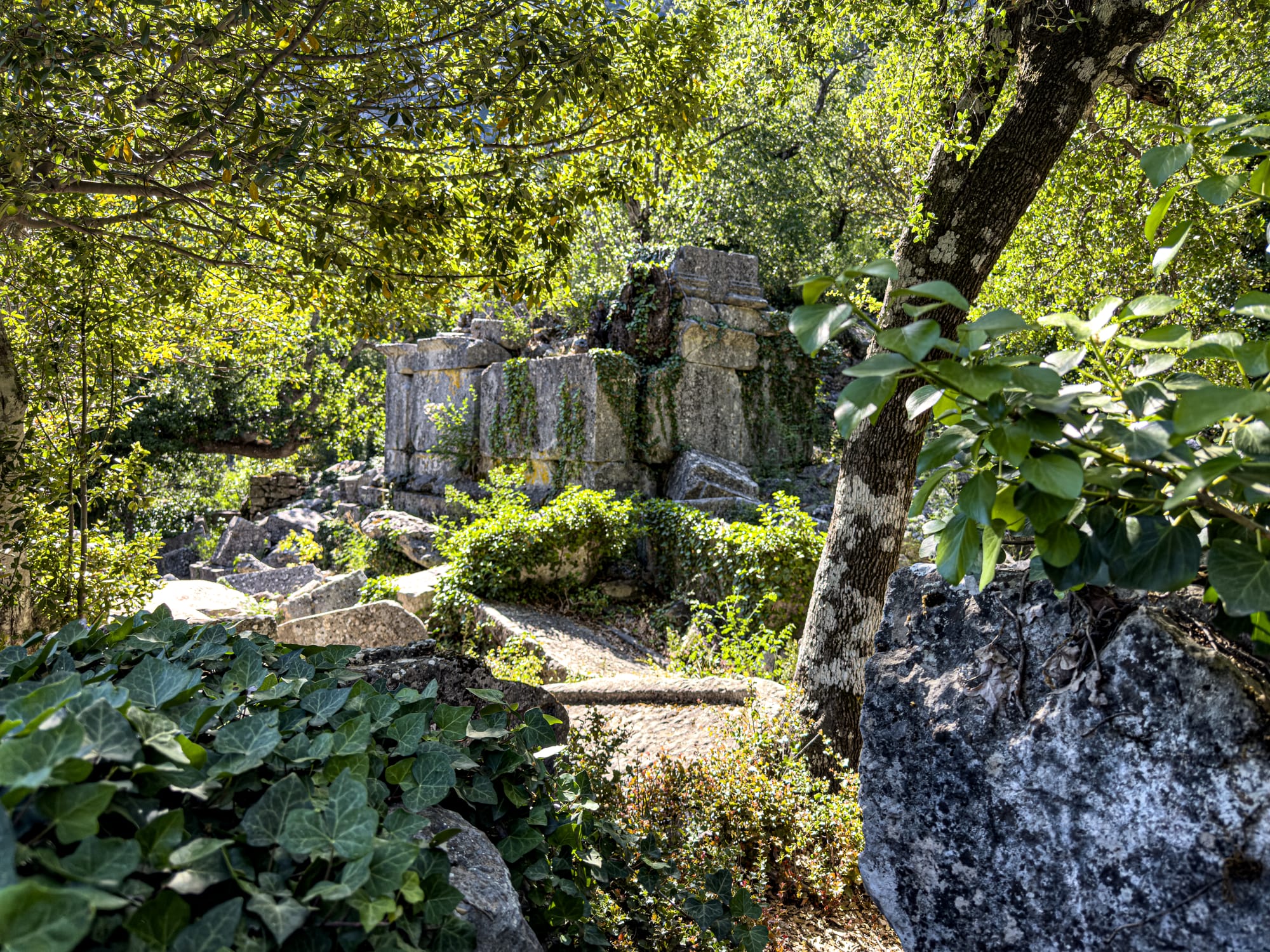
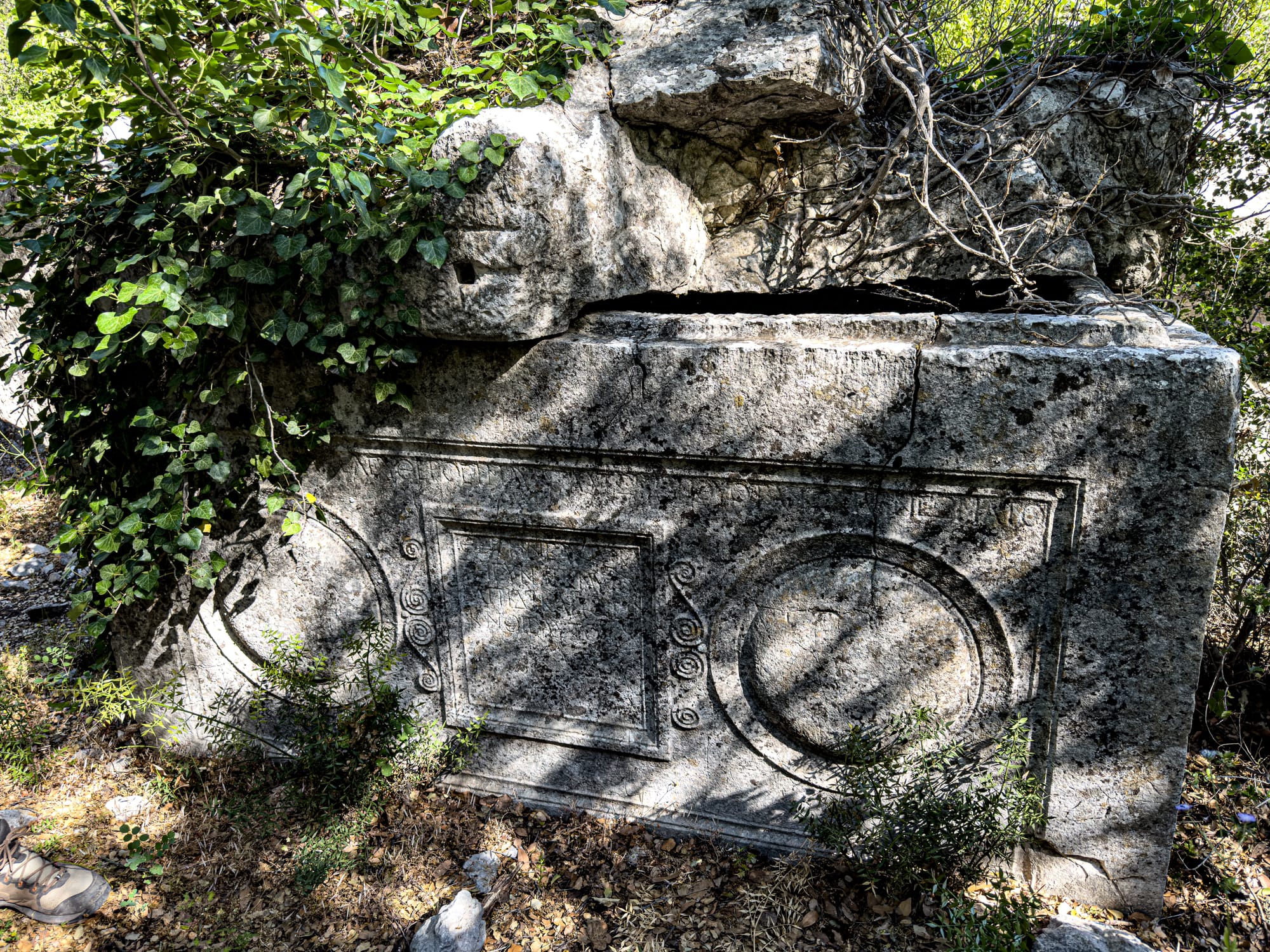
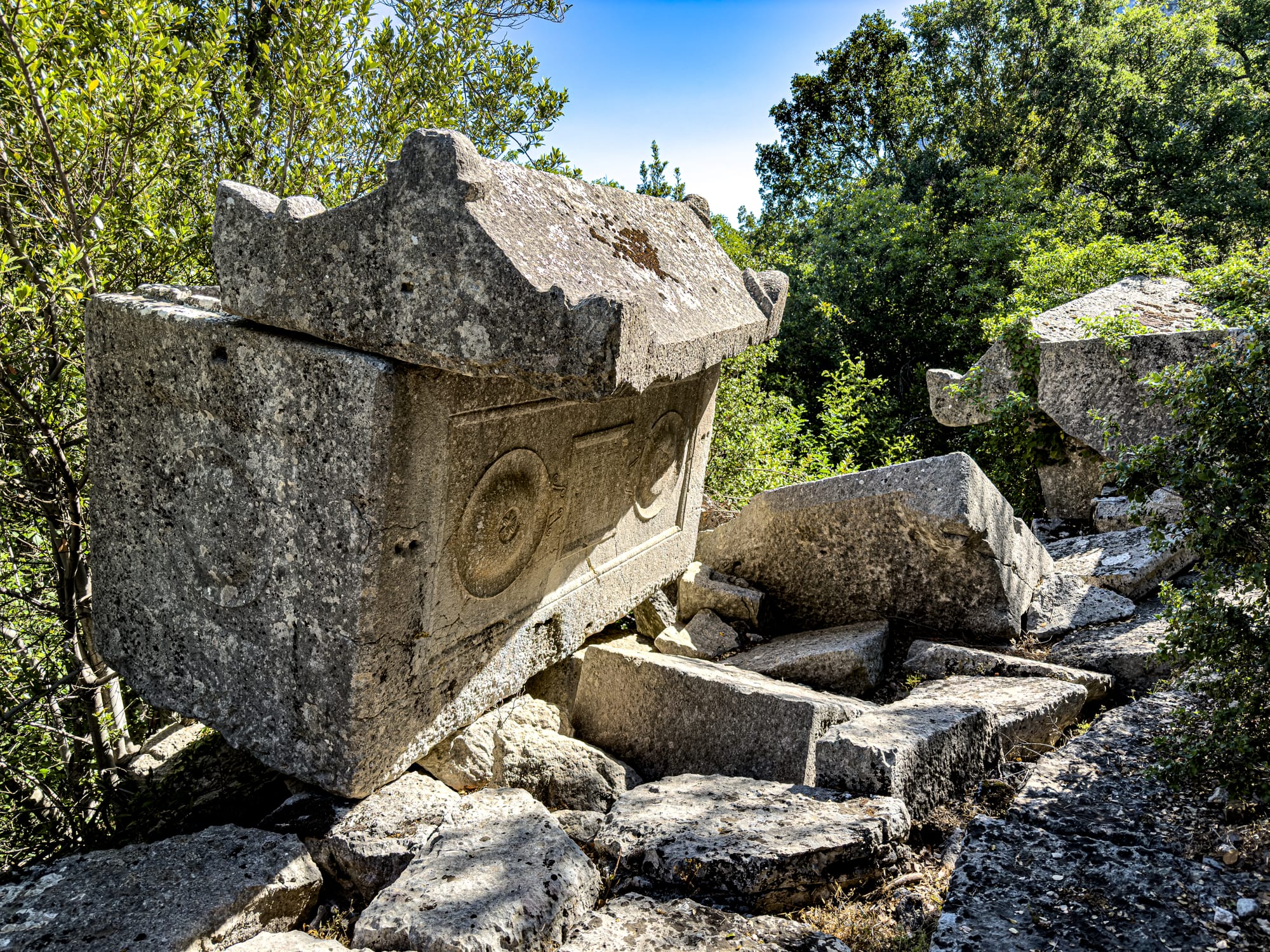
Tumbled sarcophagi and ivy-cloaked stones reveal the once-grand necropolis of Termessos
Then came a gradual incline through forested switchbacks, emerging onto ledges with views across the Antalya basin. At regular intervals, we stopped to examine stonework, discuss Pisidian customs, and peer into old water systems—some still partially intact.
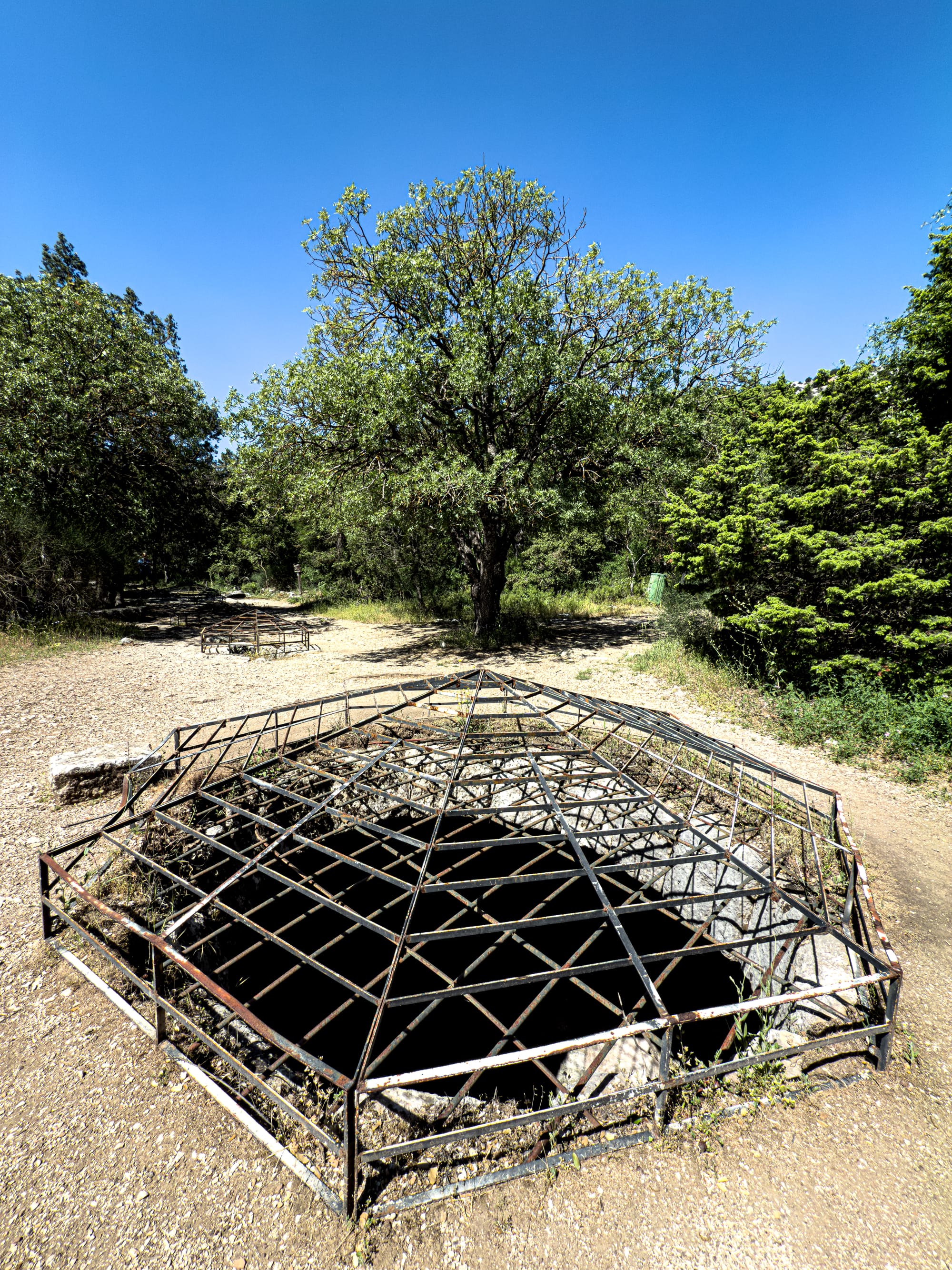
We saw where water would’ve been collected from rain channels and stored in large cisterns carved into the bedrock. Ingenious, sustainable engineering from a time when survival meant harmony with terrain.
The amphitheater stop was the pinnacle. The path opens suddenly to the structure, revealing stone seating curved in a near-perfect arc, facing an unimaginable backdrop of vertical peaks.
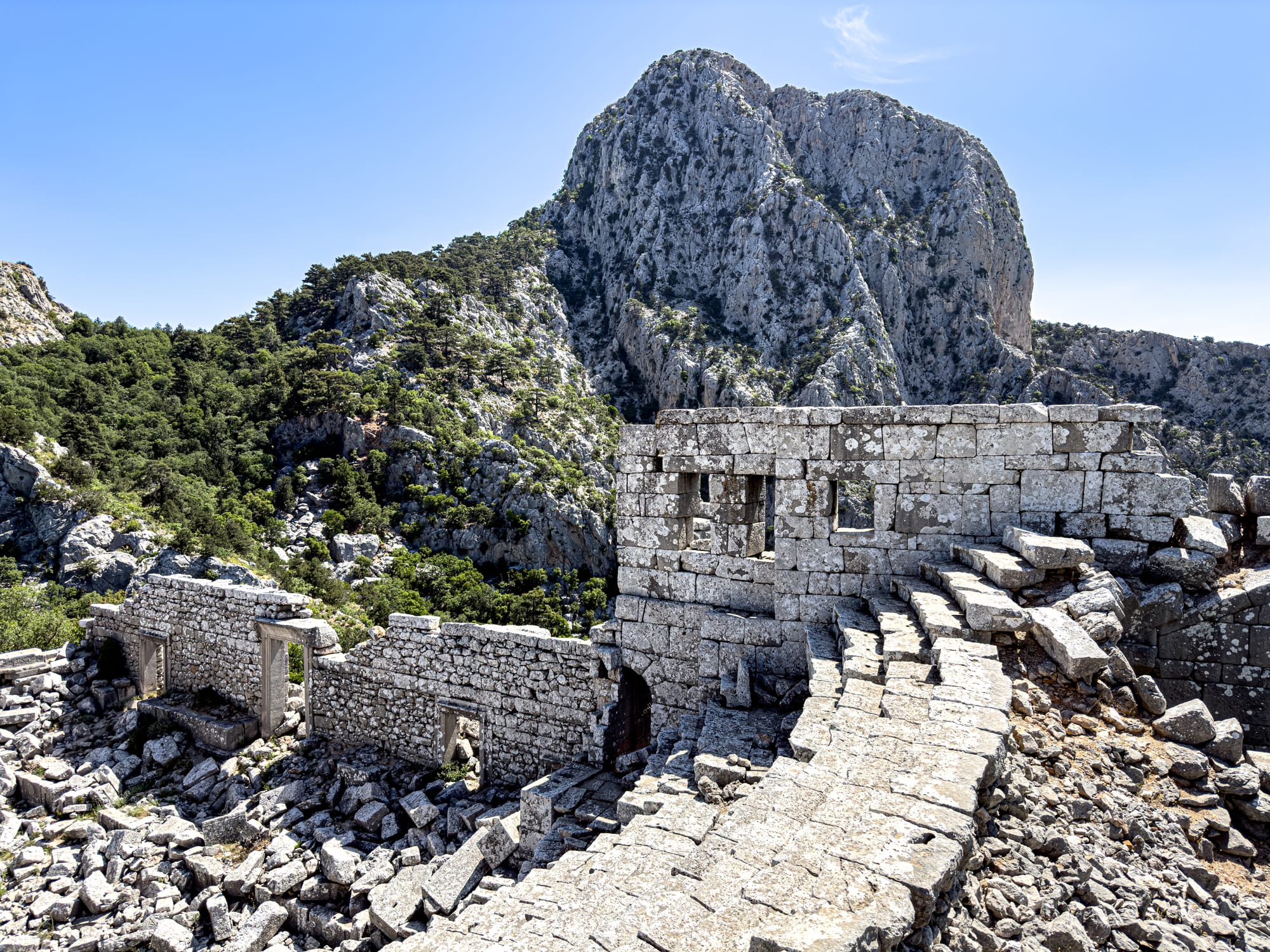
Even under the mid-morning sun, the silence in the theater was complete. No voices echoed but our own. It was a moment of awe that felt earned by the climb.
A landscape between worlds
Termessos is a quiet place. The fusion of stone and forest, ruin and bloom, makes it feel suspended in time—like something slowly being reclaimed, but still offering itself to be seen.
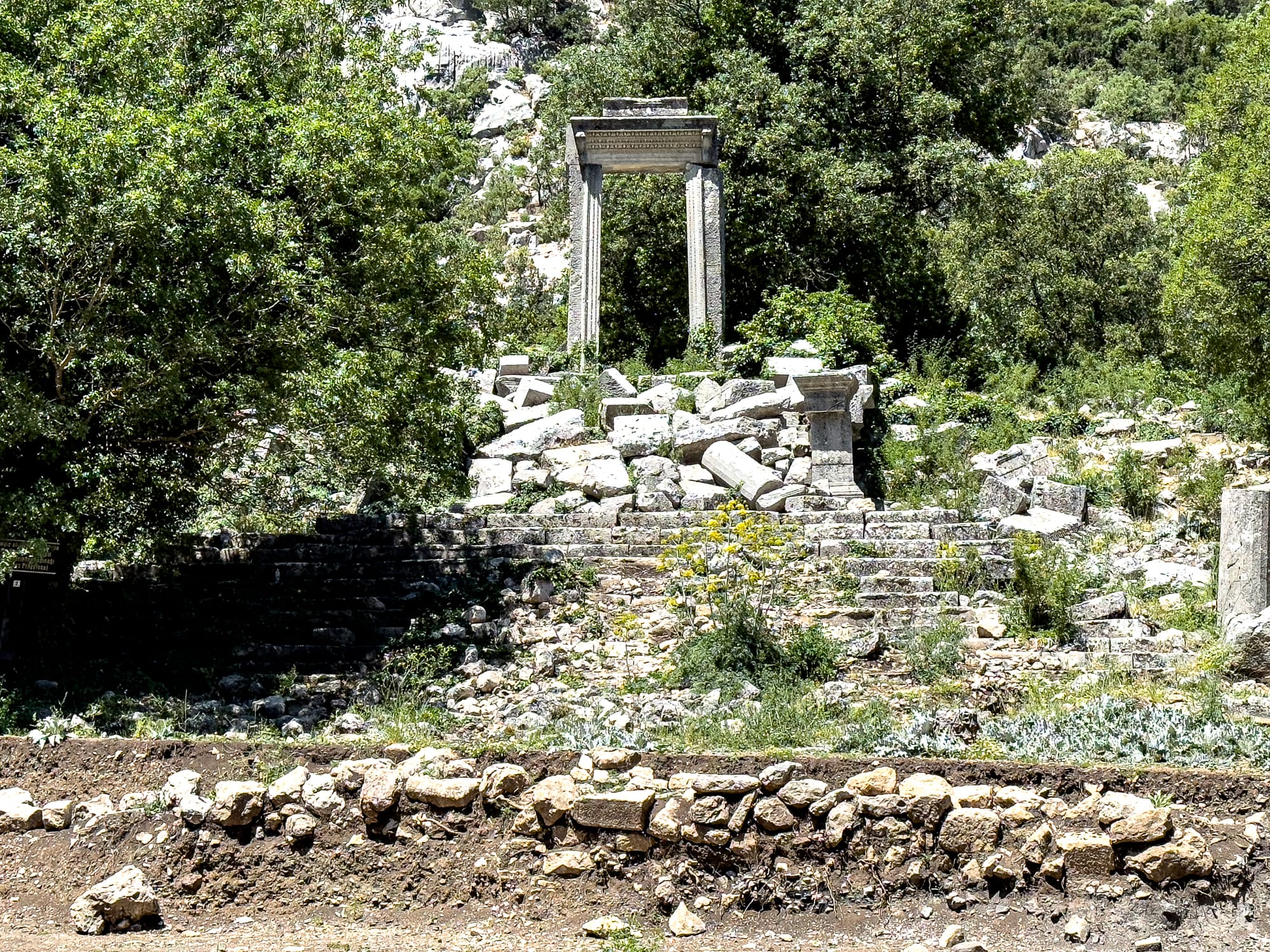
And it’s this balance—of reverence, wonder, and solitude—that defines the Termessos experience.
The hike to Termessos is available via this guided tour from Antalya. It includes transport, history-rich interpretation, and flexible pacing.
It’s one of the rare ways to access and appreciate this remarkable ancient site—without the crowds, without the noise, and with everything you need to make the most of the journey. We thoroughly enjoyed it.






